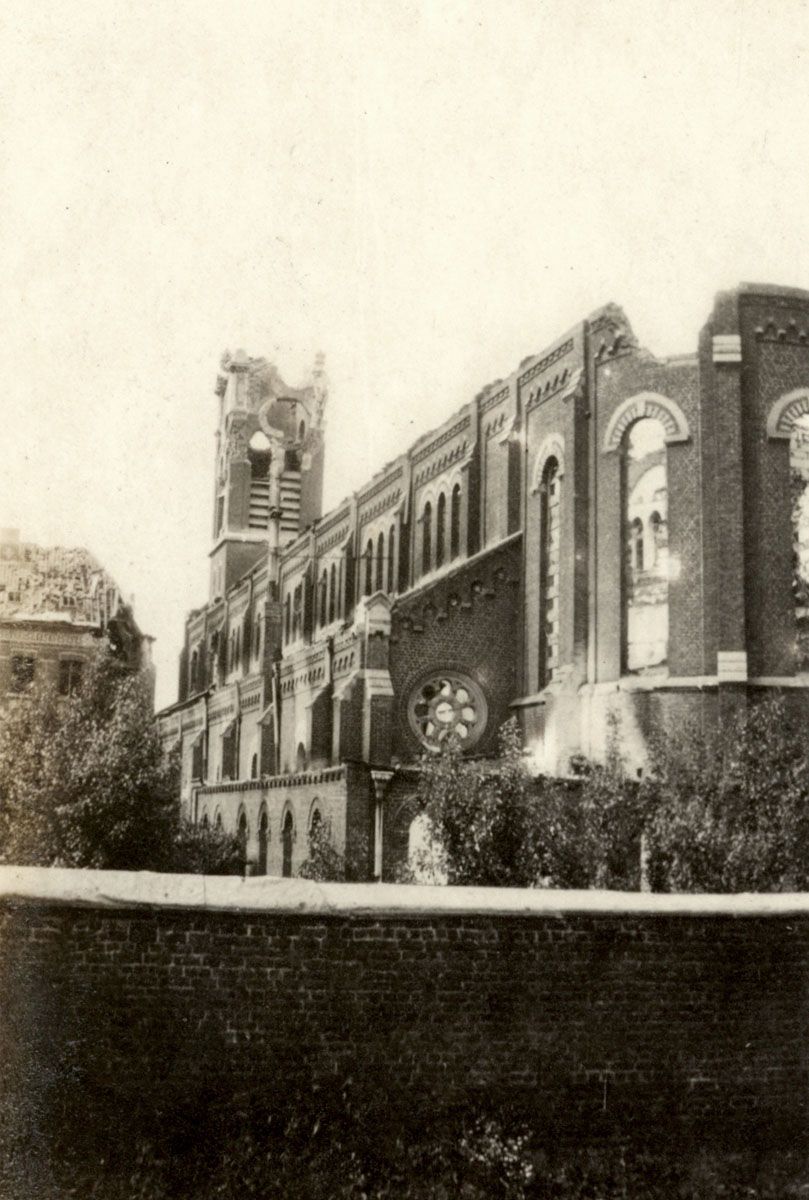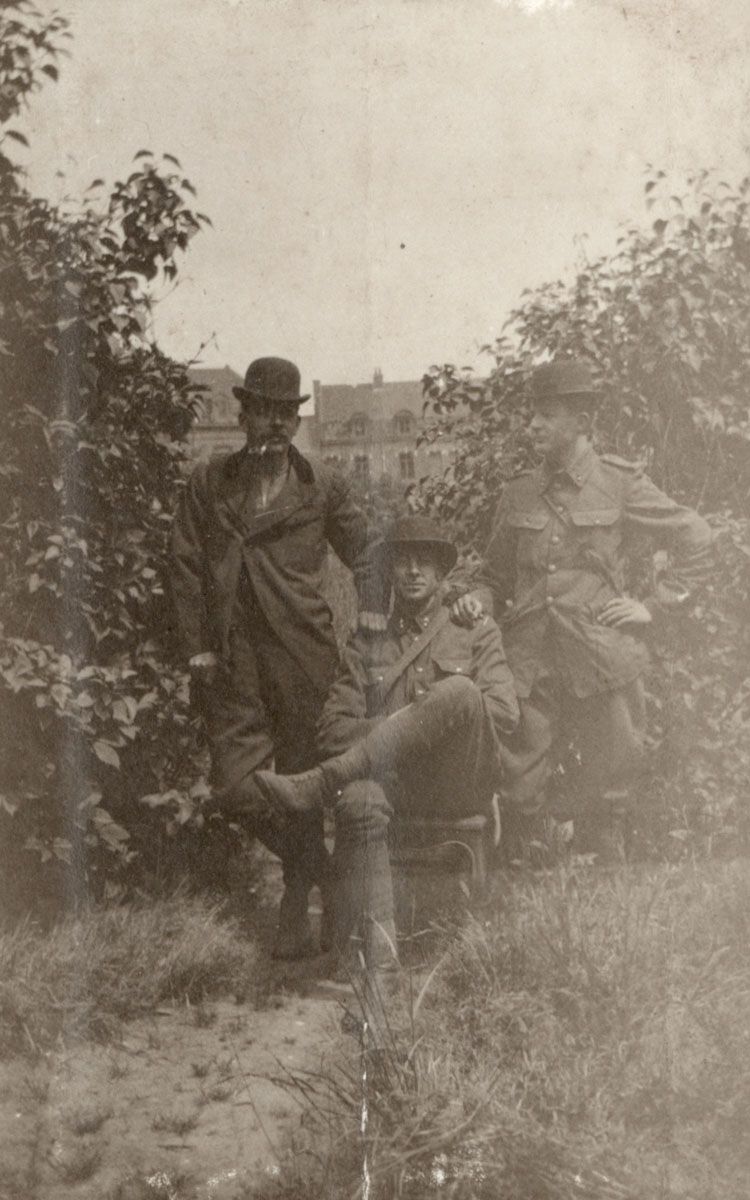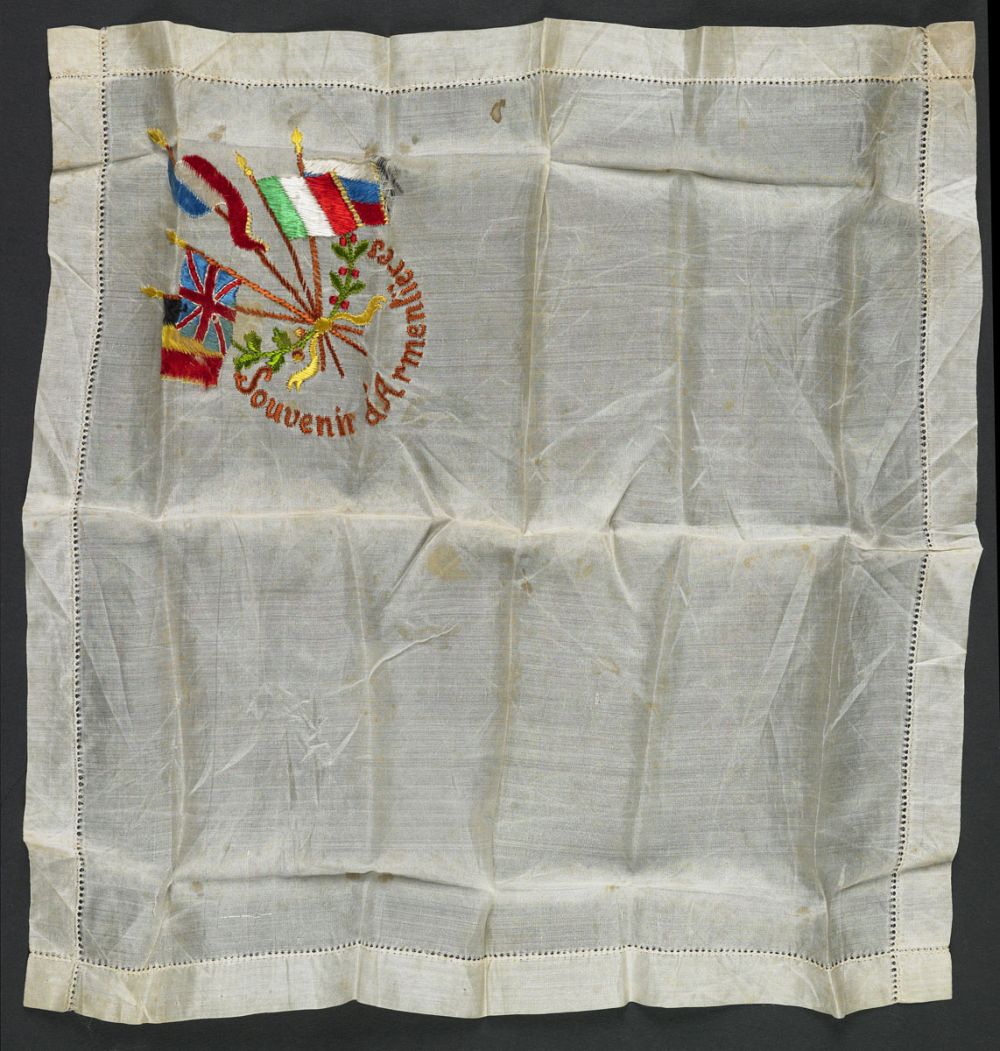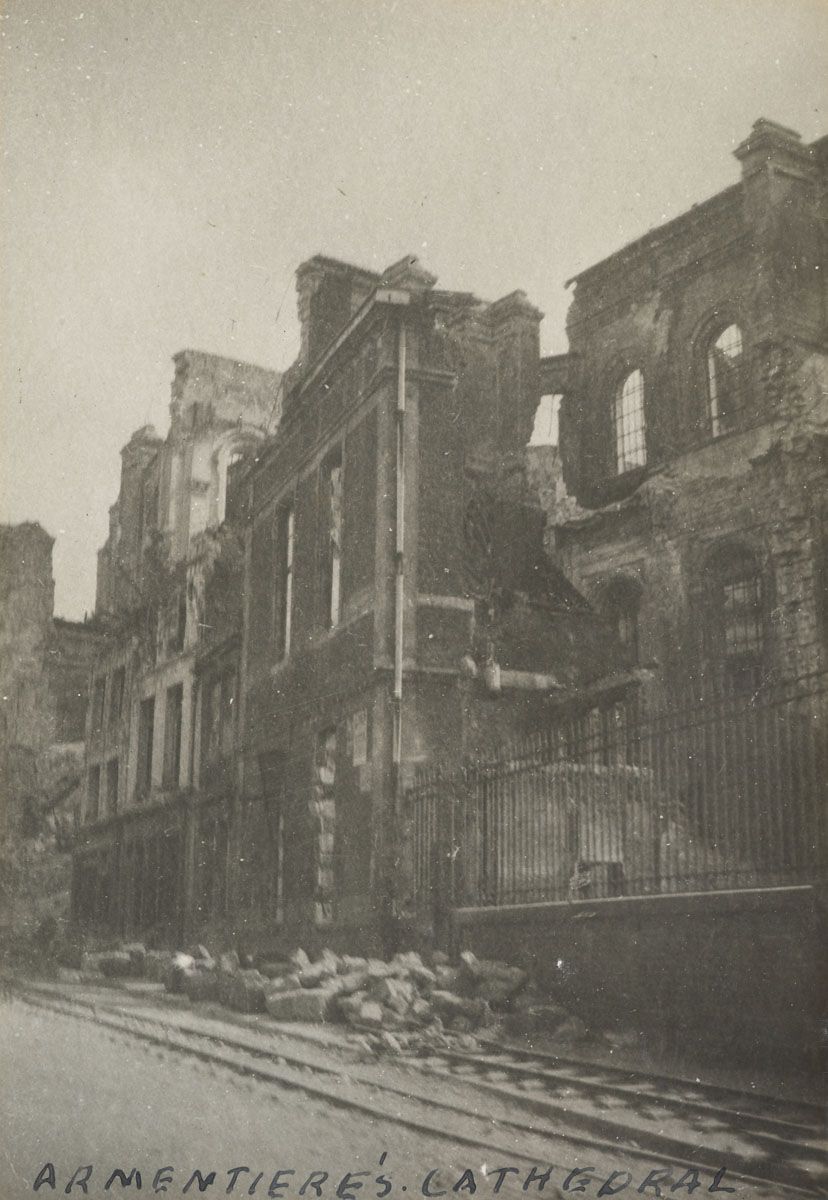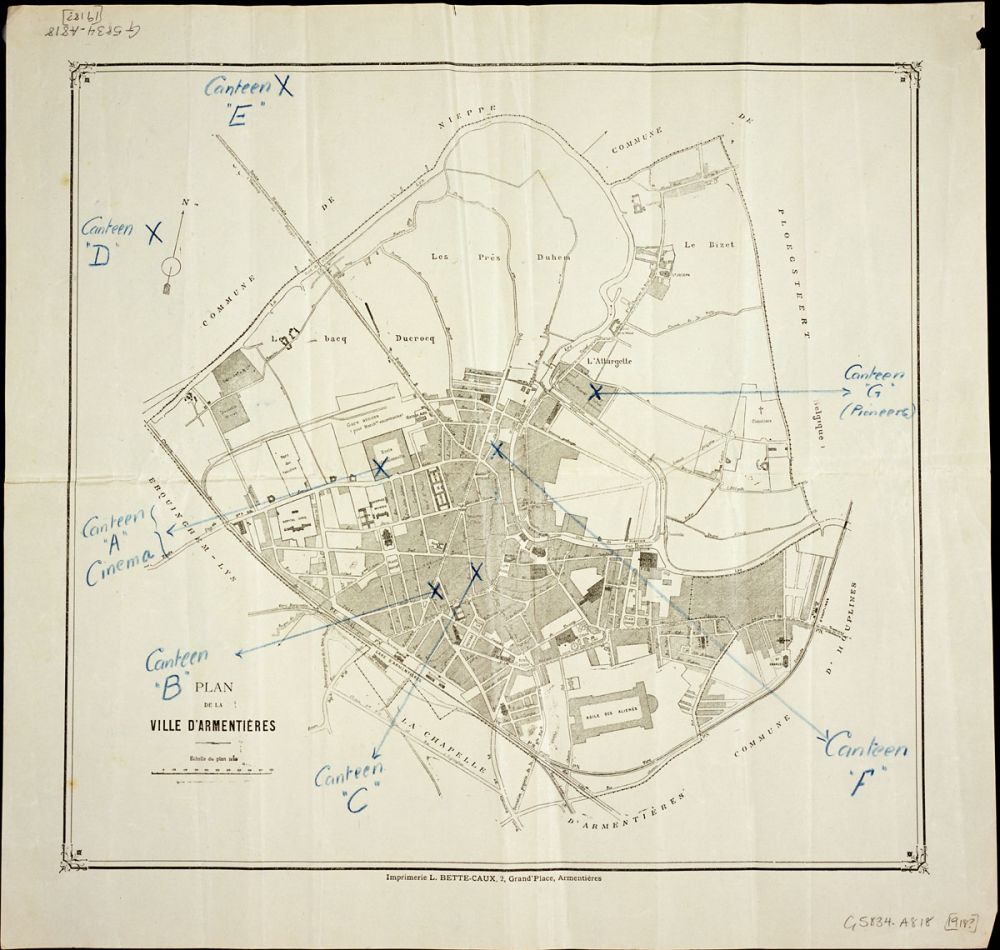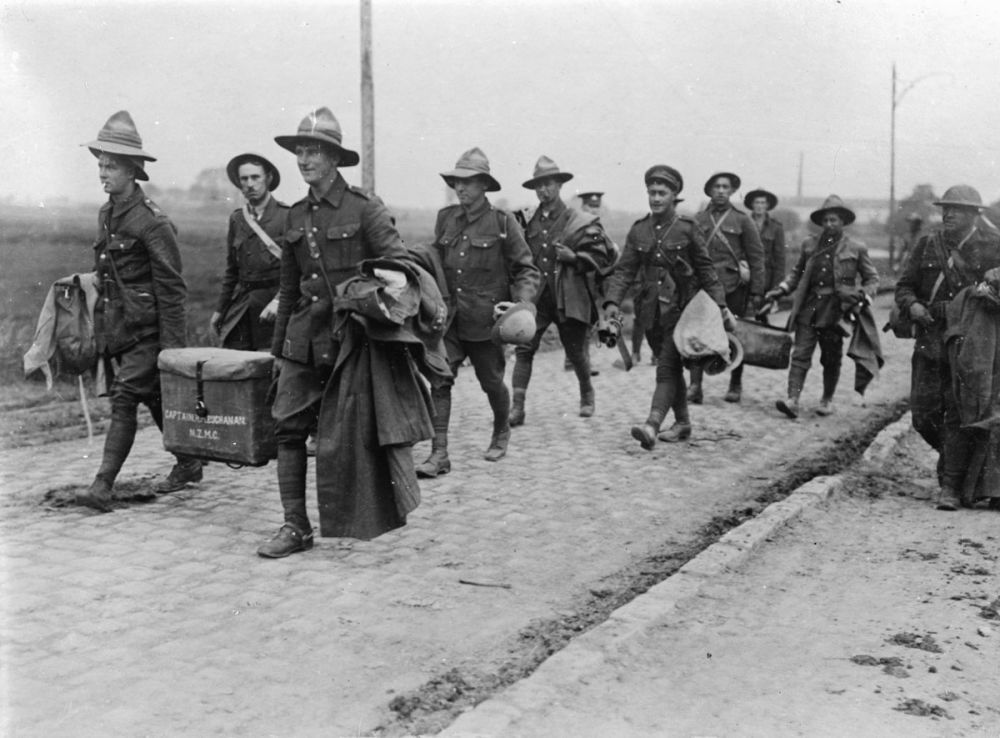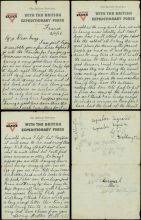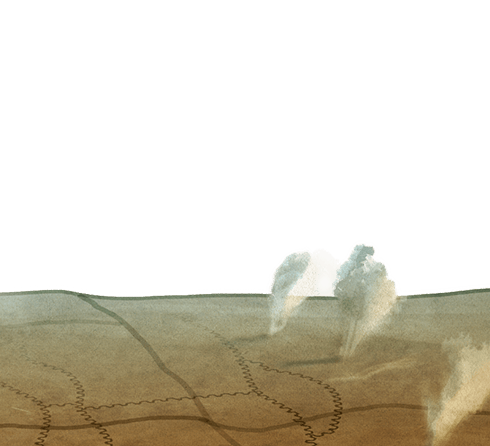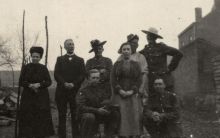Armentières Mairie
ou’re standing outside the town hall, the Mairie, in what was, in 1916, the partly-abandoned industrial town of Armentières. This square, where you are now, was known by the soldiers as 'half-past eleven square', because the clock had been hit by artillery at exactly that time, and that’s when the hands froze, and stayed there for the rest of the war. It’s famous for the song ‘Mademoiselle from Armentières’, and for the New Zealanders, this town was a place to socialise a little, and to interact with locals. But it was also to be their introduction to warfare on the Western Front. Armentières was situated behind the lines, and although it was still affected by sporadic artillery fire, a large part of its civilian population remained, many of whom catered for the British soldiers by running cafes and selling souvenirs – embroidered postcards being particularly popular. Armentières provided the billets and the base for soldiers who were in the frontline - which is two to three kilometres, directly in front of you - on the banks of the river Lys.
Generally the routine for the soldiers was eight days in the frontline, eight days in the support line, which was as much as one kilometre back from the frontline, and eight days out of the line - in billets here in Armentières. There were little bars and cafes set up to provide egg and chips, and beer for the soldiers. The soldiers would be able to talk to people in the streets, and they would have been conscious, for the first time, of a civilian population at war.
An interesting ritual took place once every eight days or so. You would go down to a deserted brewery, where the brewing vats had been turned into hot baths, and the soldiers would jump in, and scrub themselves clean. For clothes cleaning, local women would work behind large hessian screens. They used steam, and the soldiers would take off their long-johns, vest, and uniform, and it would be steam-cleaned in a specially designed steam chamber mounted on the back of a lorry. It was a very different life here in Armentières, compared to Gallipoli, and of course there was also the chance to indulge. And because the New Zealand soldiers were paid well and wine and beer was cheap - this could sometimes get out of hand. A favourite trick that they picked up from the Tommies was a ‘royal shandy’ - four bottles of beer and a bottle of champagne, mixed all together. You can imagine the consequences.
There are 453 New Zealanders buried in the town cemetery, and the casualties over that period amounted to 2,200. Armentières was meant to be a nursery, but was a very hard school indeed for the New Zealanders that fought, and died here in 1916.


